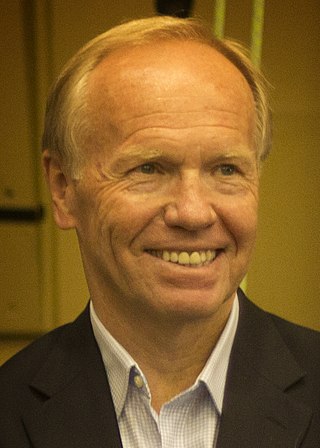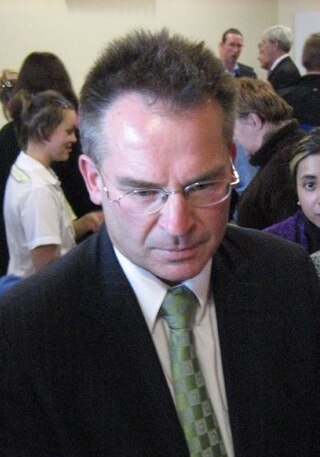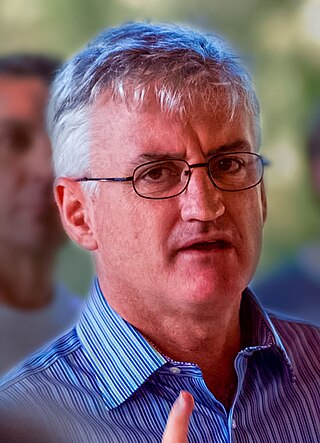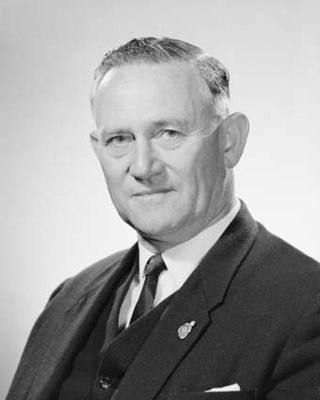
The 2004 Queensland state election was held on 7 February 2004 to elect all 89 members of the state's Legislative Assembly.

The 2001 Queensland state election was held on 17 February 2001 to elect the 89 members of the state's Legislative Assembly. The result of the election was the return of the Labor Party (ALP) government of Premier Peter Beattie, with an increased majority in a landslide. Labor won 66 seats, easily the most it has ever won in Queensland and one of Labor's best-ever results nationwide. There was a 10.07% swing towards Labor, while One Nation suffered a 13.98% swing against it, losing eight seats.

Kalgoorlie is an electoral district of the Legislative Assembly in the Australian state of Western Australia.

The 2003 New South Wales state election was held on Saturday 22 March 2003. All seats in the Legislative Assembly and half the seats in the Legislative Council were up for election. The Labor Party led by Bob Carr won a third four-year term against the Liberal–National Coalition led by John Brogden.

Elections to the Australian Capital Territory Legislative Assembly were held on Saturday, 21 February 1998. The incumbent Liberal Party, led by Kate Carnell, was challenged by the Labor Party, led by Wayne Berry. Candidates were elected to fill three multi-member electorates using a single transferable vote method, known as the Hare-Clark system. The result was another hung parliament. However the Liberals, with the largest representation in the 17-member unicameral Assembly, formed Government with the support of independents Michael Moore, Paul Osborne, and Dave Rugendyke. Carnell was elected Chief Minister at the first sitting of the fourth Assembly on 19 March 1998.

Elections to the Australian Capital Territory Legislative Assembly were held on Saturday, 20 October 2001. The incumbent Liberal Party, led by Gary Humphries, was challenged by the Labor Party, led by Jon Stanhope. Candidates were elected to fill three multi-member electorates using a single transferable vote method, known as the Hare-Clark system.

Elections to the Australian Capital Territory Legislative Assembly were held on Saturday, 16 October 2004. The incumbent Labor Party, led by Jon Stanhope, was challenged by the Liberal Party, led by Brendan Smyth. Candidates were elected to fill three multi-member electorates using a single transferable vote method, known as the Hare-Clark system.

Elections were held in the state of Western Australia on 10 February 2001 to elect all 57 members to the Legislative Assembly and all 34 members to the Legislative Council. The two-term Liberal–National coalition government, led by Premier Richard Court, was defeated by the Labor Party, led by Opposition Leader Dr Geoff Gallop, in a landslide.

Elections were held in the state of Western Australia on 14 December 1996 to elect all 57 members to the Legislative Assembly and all 34 members to the Legislative Council. The Liberal–National coalition government, led by Premier Richard Court, won a second term in office against the Labor Party, led by Opposition Leader Dr Geoff Gallop since 15 October 1996.

Elections were held in the state of Western Australia on 6 February 1993 to elect all 57 members to the Legislative Assembly and all 34 members to the Legislative Council. The three-term Labor government, led by Premier Dr Carmen Lawrence since 12 February 1990, was defeated by the Liberal–National coalition, led by Opposition Leader Richard Court since 12 May 1992.
The Western Australian National Party, officially known as the National Party of Australia (WA) Inc, and branded as Nationals WA, is a political party in Western Australia. It is affiliated with the National Party of Australia, but maintains a separate structure and identity. Since the 2021 state election, the Nationals have been the senior party in an opposition alliance with the WA Liberal Party in the state parliament.

Elections were held in the state of Western Australia on 3 October 1911 to elect 50 members to the Western Australian Legislative Assembly. The Labor Party, led by Opposition Leader John Scaddan, defeated the conservative Ministerialist government led by Premier Frank Wilson. In doing so, Scaddan achieved Labor's first absolute majority on the floor of the Assembly and, with 68% of the seats, set a record for Labor's biggest majority in Western Australia. The record would stand for nearly 106 years until Labor won 69% of seats at the 2017 election. The result came as something of a surprise to many commentators and particularly to the Ministerialists, as they went to an election for the first time as a single grouping backed by John Forrest's Western Australian Liberal League, under a new system of compulsory preferential voting and new electoral boundaries both of which had been passed by Parliament earlier in the year despite ardent Labor opposition.

The 2008 Western Australian state election was held on Saturday 6 September 2008 to elect 59 members to the Legislative Assembly and 36 members to the Legislative Council. The incumbent centre-left Labor Party government, in power since the 2001 election and led since 25 January 2006 by Premier Alan Carpenter, was defeated by the centre-right Liberal Party opposition, led by Opposition Leader Colin Barnett since 6 August 2008.
Elections were held in the state of Western Australia on 21 October 1914 to elect 50 members to the Western Australian Legislative Assembly. The Labor party, led by Premier John Scaddan, retained government against the opposition conservative Liberal Party led by Opposition Leader Frank Wilson, though with only the barest of majorities. The election also saw the emergence of the Western Australian Country Party, which had been formed at a conference of the Farmers and Settlers Association the previous year to fight for rural interests, and won eight seats at the election.
Elections were held in the state of Western Australia on 23 February 1980 to elect all 55 members to the Legislative Assembly and 16 members to the 32-seat Legislative Council. The Liberal-National Country coalition government, led by Premier Sir Charles Court, won a third term in office against the Labor Party, led by Opposition Leader Ron Davies.
Elections were held in the state of Western Australia on 19 February 1983 to elect all 57 members to the Legislative Assembly and 18 members to the 34-seat Legislative Council.
Elections were held in the state of Western Australia on 8 February 1986 to elect all 57 members to the Legislative Assembly and 17 members to the 34-seat Legislative Council. The Labor government, led by Premier Brian Burke, won a second term in office against the Liberal Party, led by Opposition Leader Bill Hassell since 16 February 1984.

Elections were held in the state of Western Australia on 21 March 1959 to elect all 50 members to the Legislative Assembly. The result was a hung parliament—the two-term Labor government, led by Premier Albert Hawke, was defeated with an average swing against it of about 7 per cent, but the Liberal-Country Party coalition, led by Opposition Leader David Brand, won exactly half of the seats, and needed the support of at least one of the two Independent Liberal members to obtain a majority in the Assembly. The situation remained precarious throughout the term—while Bill Grayden joined the LCL the following year, giving the Coalition a one-seat majority, the other Independent Liberal, Edward Oldfield, joined the Labor Party.

The 2017 Western Australian state election was held on Saturday 11 March 2017 to elect members to the Parliament of Western Australia, including all 59 seats in the Legislative Assembly and all 36 seats in the Legislative Council. The eight-and-a-half-year two-term incumbent Liberal–WA National government, led by Premier Colin Barnett, was defeated in a landslide by the Labor opposition, led by Opposition Leader Mark McGowan.

The 2021 Western Australian state election was held on Saturday 13 March to elect members to the Parliament of Western Australia, where all 59 seats in the Legislative Assembly and all 36 seats in the Legislative Council were up for election.
















